
views
Mounting Wall Hooks in Wooden Studs
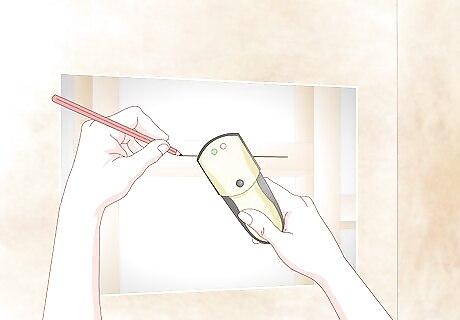
Use a stud finder to locate studs behind your walls. Studs are the framework behind the walls in your home, and screwing into them offers the most support for your hooks. Stud finders are small handheld machines that can detect the wood behind your walls. Hold the stud finder against the wall and press the button to turn it on. Move the stud finder across your wall and wait for it to beep. Mark the location of your stud on the wall with a pencil so you know where to put your hook. Studs are commonly 16 inches (41 cm) apart from one another, but your home’s architecture may be different. If you don’t have a stud finder, you can also try knocking on your walls. Knocking on a stud will produce a full, solid sound while knocking on an area without one will sound hollow.
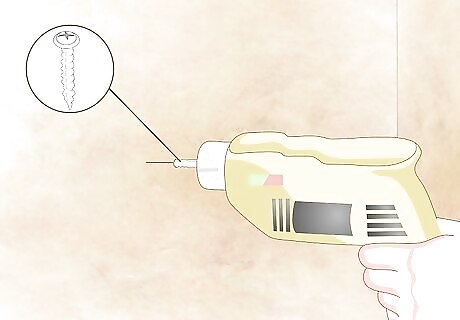
Drill a hole into your wall slightly smaller than the screw your hook came with. Change your drill bit so it’s slightly smaller than the threaded part of your screw. Place the end of your drill on the mark you made on your wall and start running the drill slowly to start your hole. Once you drill through the wall, speed up the drill so it can dig into the wooden stud. Make your hole the same depth as your screw so it can hold securely. You don’t have to pre-drill holes if you don’t want to, but it can prevent your walls from chipping and your studs from splitting. Don’t pre-drill holes if your hook uses nails to hold it in place.
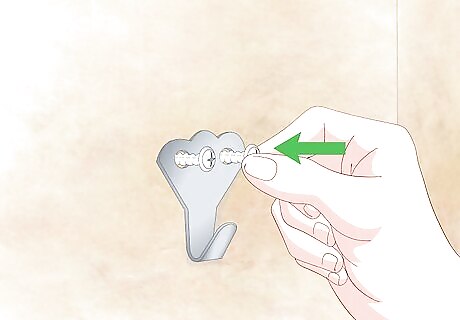
Feed the screw into the hole on your hook and line it up to the wall. Your hook should have a hole in its front to secure your screw. Place your screw through the hole and hold the hook up to your wall. Place the point of your screw in the hole you just drilled so you can easily start screwing it in. If the hook uses nails, slide the end of the nail through the hole and place the end of the nail against the mark you drew on the wall. Many hooks will come with the screws or hardware required to secure them to the wall. It’s okay to let the hook hang crooked when you first place it on the wall since you can rotate it after you tighten it.
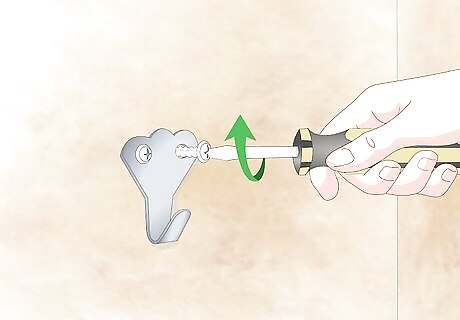
Screw or hammer the hook into the wall. If your hook uses nails, use a hammer to drive the nail into the stud. Otherwise, use a screwdriver to tighten the hook onto your wall. Make sure your hook faces right-side up before completely securing the screw so it hangs correctly. Check your hook’s maximum weight before hanging anything on it so you don’t accidentally rip it out of the wall.Tip: Use your drill with a screwdriver bit to secure your hook in place faster.
Anchoring Hooks between Studs
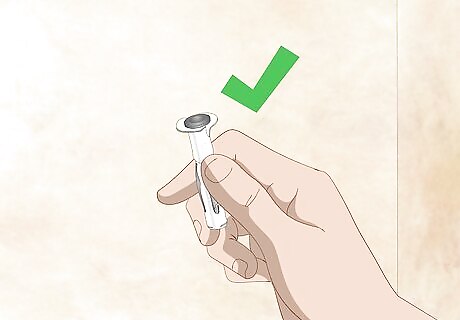
Get wall anchors for your screws. Wall anchors look like hollow screws and are used in concrete, masonry, or drywall when you don’t have a stud to support your hook. Look for a wall anchor meant to support the weight of the object you’re hanging and made for the material your wall is made from. Make sure you have enough wall anchors for all of your screws. Wall anchors can be purchased from your local hardware store. Avoid hanging anything between studs without wall anchors since they could rip out of the wall and fall out.
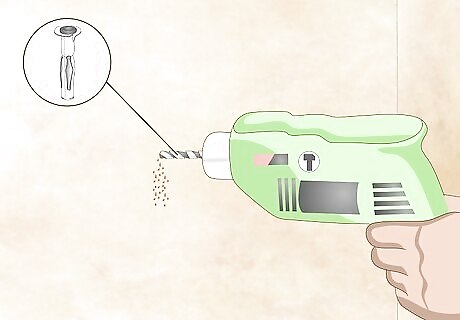
Drill a hole the same size as your wall anchor. Match the width of your wall anchor to the drill bit you use to make the hole. Start drilling slowly to protect your drill bit and reduce the amount of dust. Keep drilling your hole until it’s the same depth as your anchor. Since drilling into a hard surface can create dust, wear safety glasses and a face mask while you’re drilling.Tip: If you’re securing your hook in drywall, use an awl or the end of your screwdriver to pierce a hole in the wall without creating any dust.
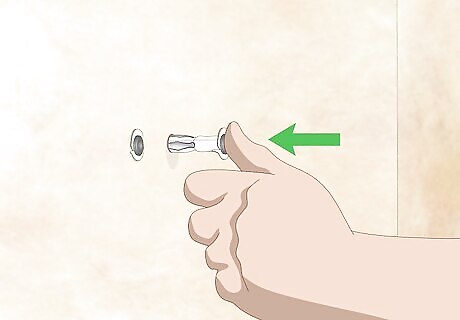
Screw or feed your anchor into the hole you made. If your anchor doesn’t have threading on the outside, simply slide the anchor into place and tap it in with a hammer if you need to. If your anchor is threaded, use your screwdriver to secure it to your wall. Make sure the end of the anchor is flush with the wall when you’re finished.
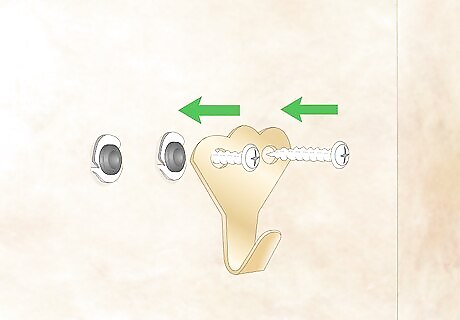
Place your screw into the hook and align it with the anchor on your wall. Locate the hole on the front of your hook where the screw feeds in. Slide the threaded end of your screw through the hole and set the point of the screw inside the anchor. You hook should come with the screws needed to hold it in place. If not, use a screw that’s the same length as your anchor. It doesn’t matter if your screw hangs crooked when you start screwing it in since You’ll have a chance to rotate it later.

Secure the screw in the center of your anchor. Use your screwdriver to tighten the screw into the anchor. As the screw goes further into the anchor, the anchor will expand and create a firm grip so it doesn’t fall out of the wall. When the hook is almost tight against the wall, make sure it’s rotated the right direction so you can hang things on it. You may also use a drill with a screwdriver bit to work faster.
Hanging Adhesive Hooks

Slide the back off of the hook. Adhesive hooks usually have a backplate that can be removed to make installation easier. Flip the adhesive hook upside down and try sliding the back piece down to remove it from the hook. Once the hook piece is separated from the backplate, set the hook aside. Adhesive hooks can be purchased from your local convenience store. Smaller adhesive hooks may not have a removable back. If your hooks do not, you can skip this step.Tip: Adhesive hooks can be large for hanging clothes or heavier objects, or they could be small to hang pictures. Choose the style hook that works best for what you’re trying to hang.
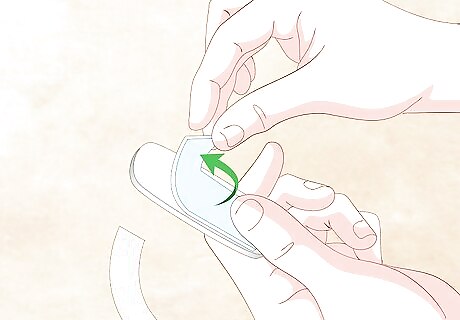
Peel the backing from the adhesive strip and press it onto the backplate. Adhesive strips will come with your package of hooks and should be double-sided. Locate the side of the adhesive strip meant to attach to the backplate and peel the protective layer off. Firmly press the adhesive strip onto the flat side of the backplate so the tab points down. Hold the strip on the backplate for 30 seconds to ensure it’s fully adhered. If your hook doesn’t have a removable backplate, then press the strip directly on the back side of the hook.

Press the adhesive strip onto your wall and hold it for 30 seconds. Remove the protective backing on the second side of the adhesive strip. Align the backplate on your wall where you want to place the hook and make sure the tab on the front of the backplate is at the bottom. Press the adhesive strip for 30 seconds so it bonds tightly to your wall. Most adhesive hooks should stick to any wall surface that’s mostly flat.
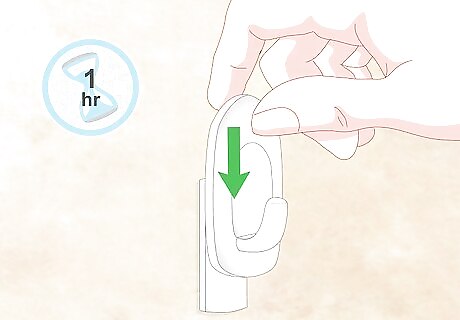
Slide the hook onto the wall and wait 1 hour before hanging anything. Hold the hook piece over the backplate so the tab lines up with the hole in front of the hook. Slide the hook down onto the backplate until the tab clicks into place to secure your hook. Leave the hook empty for at least 1 hour so the adhesive has time to fully set. Don’t hang anything more than 5 lb (2.3 kg) on large adhesive hooks since they could break off of the wall. If you have smaller hooks, read the instructions carefully to see how much weight they can support.




















Comments
0 comment